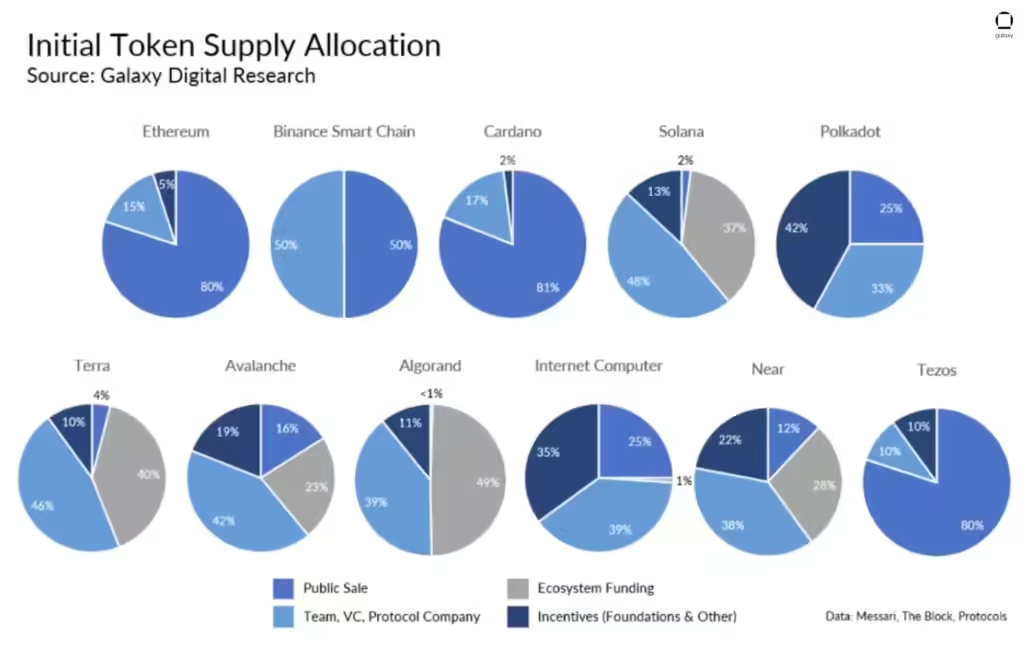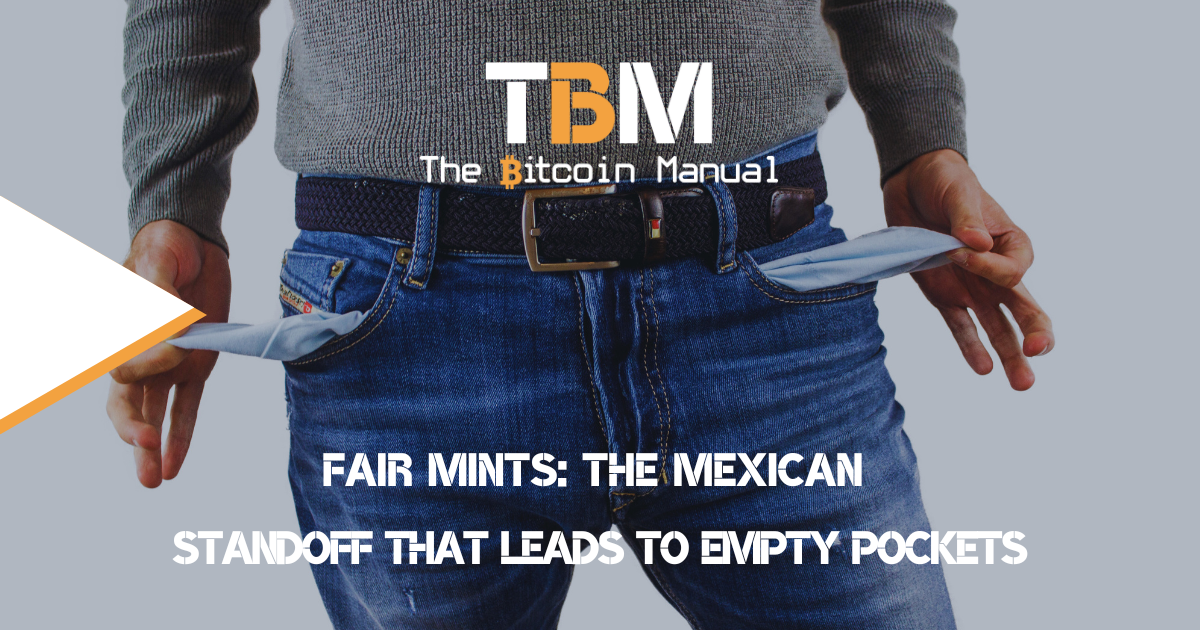Altcoins have often painted themselves with a coat of decentralisation, claiming to democratise finance. It’s a “free market bro”. Anyone can create their own currency and participate in a revolution against traditional financial institutions.
A movement that started with Bitcoin has seen a faction split off and devolve into a paragon of Ponzis, playing out in real-time, online for the world to see.
This ease of creating currency is a power that humans will always abuse; governments abused it, which led to the motivations that created Bitcoin, so why wouldn’t tech companies that only need to ship some code abuse it?
The truth many crypto enthusiasts might want to avoid hearing.
Creating a cryptocurrency is often shockingly simple, and this very ease can be exploited by those looking for a quick buck. Crypto issuers aren’t motivated by technology or creating a new asset class; they are interested in manipulating the system and playing in unregulated markets for personal gain.
Altcoins killer app is a tactic as old as money itself: seigniorage, the profit made from issuing currency.
Premines are cryptos dirty and poorly kept secret
Imagine a gold mine, but the gold is a made-up token, and access to the mine is only granted once it has been raided. Before anyone else can start digging, a select few scoop a large portion of the supply for themselves.
That’s a premine in the crypto world.
It’s when a large portion of a cryptocurrency’s total supply is created before it’s publicly available for purchase.
Cryptocurrency creators do this for many reasons, mainly to generate income and pay themselves for marketing, development, and any other expenses. Running a cryptocurrency isn’t free, especially when you cannot publicly distribute network support.
Someone has to pay for the servers and do business development so tokens get support with popular wallets and exchanges; these things don’t happen by chance; they happen because you’re funding it by purchasing the company’s pre-mined stake.

Some projects use their premine funds ‘responsibly” to keep their projects afloat, slowly releasing tokens and feeding the market with new developments in hopes of generating demand for their token.
While others are in it for the shorter term and dump their initial supply on the market until complete demand saturation, the exit scam is complete once the buy side of the order book is eviscerated.
Fair mints a fiesta for first come, first serve scams
To combat the scourge of scams issuing tokens willy-nilly and leaving buyers high and dry as they find themselves stuck in honeypot pump-and-dumps controlled by a single actor or company, token issuance needed a better distribution method.
When Ordinals came along and the invention of BRC-20 tokens, the idea of adding a cost to create coins started to circulate. The concept of “fair mints” claims to solve the problem of centralised issuance, ushering in a proof of work or, rather, a cost mechanism for claiming coins.
They sound appealing— offering a level playing field where everyone gets a shot at the next big token. But hold on to your sombreros, folks, because this “fairness” might be a recipe for a different kind of fiesta:
A rug-pull fiesta.
Like everything crypto, fair mints are a half-baked solution that does not consider the trade-offs and, of course, this little thing we call economic reality.
What are fair mints?
Fair mints are a way of launching a cryptocurrency where everyone has the same opportunity to buy tokens at the initial offering. No pre-allocated coins for the developers, no shady insider deals.
Instead of having a central actor sue when the Ponzi goes belly up, the initial supply is distributed by early adopters of the Ponzi putting in claim transactions, hoping new users will come in and buy their claim for more than they paid in transaction fees.
Sounds fair, right?
Yes, the degens are fighting for equality, equal opportunity to profit from the next round of suckers who are late to the party.
Okay, hombre, someone needs to walk the dog on this one and see where they end up.
The problem with fair mints
The issue lies in the very nature of who benefits from seignorage.
Fair mints lack early investors or a development team with a vested interest in holding the token. This creates a “Mexican standoff” where everyone fears being the last one holding the bag.
As soon as the price dips (inevitable with a new, unproven token), there’s a mad dash to sell, causing a rapid price drop – essentially a rug pull by the collective action of investors.
In this free-for-all, a few lucky early sellers might make a quick buck. But for the vast majority, the price plummets before they can get out, leaving them holding worthless tokens.
Since no company is actively trying to attract interest in the token, once the hype has faded, there will be no liquidity as all the early dumpers have moved on to the next Ponzi.

Making markets requires liquidity
Fair mint tokens are a mechanism for meme coin deployment, and these new meme coin holders have one incentive: to try and drum up as much liquid as possible. In some cases, liquidity will come from the unsophisticated investor looking to allocate to the next hot crypto penny stock, which they were shilled on Twitter or YouTube.
While the tokens that can meme themselves into popularity will be lucky enough to get demand from exchanges thinking they can earn additional fees, they’re willing to gamble on purchasing an initial supply, helping early minters dump their allocation.
Fair mint tokens have a lifespan
Fair mints rely heavily on marketing hype to drive initial interest. Without a proven product or the veil utility, the price inflates based on speculation and sentiment, and drumming up sentiment will be someone’s job.
Despite the claims of coin distribution being fair, those with deep pockets will still be able to claim more tokens than the average person, especially if they can get in good with miners or pay for out-of-band blocks.
There will be insiders in fair mints; they’re just trying to add a few layers of complexity to try and have plausible deniability.
BRC-20 tokens are just influencer pump and dump scams, no different than ERC-20 tokens.
— Pledditor (@Pledditor) December 30, 2023
Don't fall for the "fair launch" or "everyone could mint" bullshit. There's *always* a group of insiders who gave themselves an unfair advantage on retail investors. pic.twitter.com/i9Etb7QIvP
If the laughs surrounding a specific meme dry up and you’re still caught thinking it’s funny, you will end up paying the price.
This bubble inevitably bursts, leaving investors holding worthless tokens.
Who wins? Not you (Probably)
Fair Mint fanatics remind me of the airdrop hunters of 2017 who are willing to spend all day scouring Tweet threads, Telegram groups, and Discord chats in search of the next drop. These hunters waste hours each day filling in forms, retweeting, or jumping through various hoops to try and secure an allocation.
The fair mint game on BRC-20 tokens and now soon with Runes is exactly the same; you need to find your way into these select groups where you’re the first to mint and can capture some of that sweet alpha.
Fair mints often favour experienced traders who can evaluate the rumours and sentiment, time the market and exit quickly.
For the average investor, checking their social media feeds after work, you don’t have a real chance of finding the sweet spots of rapid price fluctuations and short life spans that fair mint meme coins have to offer.




